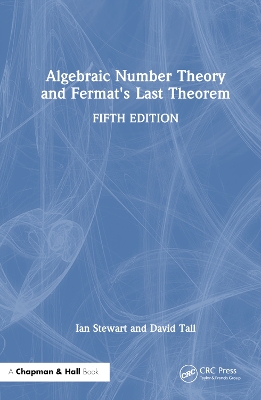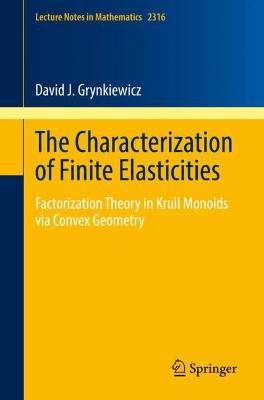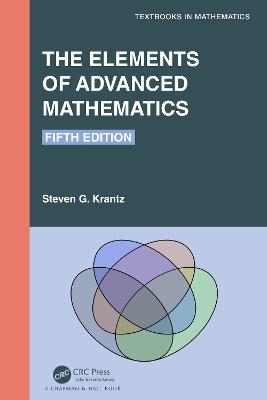Mathematical Theory of Fuzzy Sets
 portes grátis
portes grátis
Mathematical Theory of Fuzzy Sets
Wu, Hsien-Chung
Taylor & Francis Ltd
12/2024
630
Dura
9781032905846
Pré-lançamento - envio 15 a 20 dias após a sua edição
Descrição não disponível.
1. Mathematical Analysis. 1.1. Infimum and Supremum. 1.2. Limit Inferior and Limit Superior. 1.3. Semi-Continuity. 1.4. Miscellaneous. 2. Fuzzy Sets. 2.1. Membership Functions. 2.2. ?-Level Sets. 2.3. Identical Properties. 2.4. Types of Fuzzy Sets. 3. Set Operations of Fuzzy Sets. 3.1. Complement of Fuzzy Sets. 3.2. Intersection of Fuzzy Sets. 3.3. Union of Fuzzy Sets. 3.4. Inductive and Direct Definitions. 3.5. ?-Level Sets of Intersection and Union. 3.6. Mixed Set Operations. 4. Generalized Extension Principle. 4.1. Fuzzification of Crisp Functions. 4.2. Extension Principle Based on the Euclidean Space. 4.3. Extension Principle Based on the Topological Spaces. 4.4. Extension Principle Based on the Triangular Norms. 4.5. Generalized Extension Principle Based on the Topological Spaces. 4.6. Generalized Extension Principle Based on the Normed Spaces. 4.7. Generalized Extension Principle for Non-Normal Fuzzy Sets. 5. Arithmetics of Fuzzy Sets. 5.1. Arithmetics of Fuzzy Sets in R. 5.2. Arithmetics of Fuzzy Intervals. 5.3. Arithmetics of Fuzzy Vectors. 6. Gradual Elements and Gradual Sets. 6.1. Basic Concepts. 6.2. Set Operations Using Gradual Elements. 6.3. Arithmetics Using Gradual Numbers. 7. Generating Fuzzy Sets. 7.1. Gradual Sets and Its Rearrangement. 7.2. Nested Gradual Sets. 7.3. Countable-Based Nested Gradual Sets. 7.4. Generating Fuzzy Sets from Nested Gradual Sets. 7.5. Generating Fuzzy Sets from Countable-Based Nested Gradual Sets. 7.6. Defining Membership Functions. 7.8. Generating Fuzzy Intervals. 7.9. Elements and Subsets of Fuzzy Intervals. 7.10. Uniqueness of Construction. 8. Fuzzification of Crisp Functions. 8.1. Fuzzification Using the Extension Principle. 8.2. Fuzzification Using the Expression in Decomposition Theorem. 8.3. The Equivalences and Fuzziness. 8.4. Fuzzification Using Gradual Numbers. 9. General Fuzzification. 9.1. Fuzzification Using the Extension Principle. 9.2. Fuzzification Using the Expression in Decomposition Theorem. 9.3. Equivalence for the General Case. 9.4. Equivalence for the Practical Cases. 10. General Arithmetics of Fuzzy Sets. 10.1. Arithmetics of Fuzzy Sets in Vector Space. 10.2. Arithmetic Operations Using Compatibility and Associativity. 10.3. Equivalence with the Arithmetics Using Gradual Numbers. 10.4. Binary Operations. 10.5. Hausdorff Differences. 11. Inner Product of Fuzzy Vectors. 11.1. The First Type of Inner Product. 11.2. The Second Type of Inner Product. 12. Duality in Fuzzy Sets. 12.1. Lower and Upper Level Sets. 12.2. Dual Fuzzy Sets. 12.3. Dual Extension Principle. 12.4. Dual Arithmetics of Fuzzy Sets. 12.5. Representation Theorem for Dual-Fuzzified Function.
Este título pertence ao(s) assunto(s) indicados(s). Para ver outros títulos clique no assunto desejado.
set theory;non-normal fuzzy sets;fuzzy sets for engineering
1. Mathematical Analysis. 1.1. Infimum and Supremum. 1.2. Limit Inferior and Limit Superior. 1.3. Semi-Continuity. 1.4. Miscellaneous. 2. Fuzzy Sets. 2.1. Membership Functions. 2.2. ?-Level Sets. 2.3. Identical Properties. 2.4. Types of Fuzzy Sets. 3. Set Operations of Fuzzy Sets. 3.1. Complement of Fuzzy Sets. 3.2. Intersection of Fuzzy Sets. 3.3. Union of Fuzzy Sets. 3.4. Inductive and Direct Definitions. 3.5. ?-Level Sets of Intersection and Union. 3.6. Mixed Set Operations. 4. Generalized Extension Principle. 4.1. Fuzzification of Crisp Functions. 4.2. Extension Principle Based on the Euclidean Space. 4.3. Extension Principle Based on the Topological Spaces. 4.4. Extension Principle Based on the Triangular Norms. 4.5. Generalized Extension Principle Based on the Topological Spaces. 4.6. Generalized Extension Principle Based on the Normed Spaces. 4.7. Generalized Extension Principle for Non-Normal Fuzzy Sets. 5. Arithmetics of Fuzzy Sets. 5.1. Arithmetics of Fuzzy Sets in R. 5.2. Arithmetics of Fuzzy Intervals. 5.3. Arithmetics of Fuzzy Vectors. 6. Gradual Elements and Gradual Sets. 6.1. Basic Concepts. 6.2. Set Operations Using Gradual Elements. 6.3. Arithmetics Using Gradual Numbers. 7. Generating Fuzzy Sets. 7.1. Gradual Sets and Its Rearrangement. 7.2. Nested Gradual Sets. 7.3. Countable-Based Nested Gradual Sets. 7.4. Generating Fuzzy Sets from Nested Gradual Sets. 7.5. Generating Fuzzy Sets from Countable-Based Nested Gradual Sets. 7.6. Defining Membership Functions. 7.8. Generating Fuzzy Intervals. 7.9. Elements and Subsets of Fuzzy Intervals. 7.10. Uniqueness of Construction. 8. Fuzzification of Crisp Functions. 8.1. Fuzzification Using the Extension Principle. 8.2. Fuzzification Using the Expression in Decomposition Theorem. 8.3. The Equivalences and Fuzziness. 8.4. Fuzzification Using Gradual Numbers. 9. General Fuzzification. 9.1. Fuzzification Using the Extension Principle. 9.2. Fuzzification Using the Expression in Decomposition Theorem. 9.3. Equivalence for the General Case. 9.4. Equivalence for the Practical Cases. 10. General Arithmetics of Fuzzy Sets. 10.1. Arithmetics of Fuzzy Sets in Vector Space. 10.2. Arithmetic Operations Using Compatibility and Associativity. 10.3. Equivalence with the Arithmetics Using Gradual Numbers. 10.4. Binary Operations. 10.5. Hausdorff Differences. 11. Inner Product of Fuzzy Vectors. 11.1. The First Type of Inner Product. 11.2. The Second Type of Inner Product. 12. Duality in Fuzzy Sets. 12.1. Lower and Upper Level Sets. 12.2. Dual Fuzzy Sets. 12.3. Dual Extension Principle. 12.4. Dual Arithmetics of Fuzzy Sets. 12.5. Representation Theorem for Dual-Fuzzified Function.
Este título pertence ao(s) assunto(s) indicados(s). Para ver outros títulos clique no assunto desejado.







